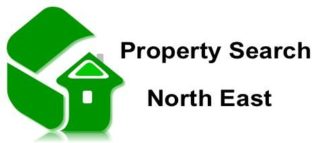Stamp duty bills to jump by £5,000
Stamp duty bills to jump by £5000 – Telegraph.co.uk
However, unlike income tax, where the 40pc rate is paid only on money earned above the threshold, the 3pc stamp duty rate becomes payable on the entire purchase price of a property. Mr Thompson said this created distortion in the market, because home owners were unwilling to buy anything just above the £250,000 threshold as a result of the extra tax payable.
The result is that properties sell for less than they would otherwise be worth, he said. Data produced for The Daily Telegraph by Legal & General shows that 23pc more properties are priced in the band just below the £250,000 threshold than in other market bands, and that the opposite occurs just above £250,000. “This is a clear link to avoiding the higher threshold,” Mr Thompson said.
“Right now, more than ever, it is important for tax receipts to be as high as possible. However, you can’t help but wonder how much more activity in the housing market and growth might be enjoyed were stamp duty thresholds to be raised, suspended or even removed.”
The £250,000 threshold for higher-rate stamp duty has been in force since July 1997. At that point, customers buying properties costing less than £60,000 paid no stamp duty, while those with properties costing between £60,000 and £250,000 paid 1pc of the purchase price. Anyone buying a property worth more than £250,000 paid 1.5pc stamp duty.
In 1997, however, £250,000 would buy you far more than an ordinary home. As the chart shows, the average house price was £79,242 in 1997 according to Land Registry figures, compared with almost £250,000 now.
Stamp duty paid on the average home
The chart shows that in 2013, once the average house price is forecast to tip over the threshold at £251,208 (according to Savills), the average home will attract a stamp duty payment of £7,536. That is almost 10 times more than in 1997, when the average property would have attracted a stamp duty payment of £792.
Despite the rise in property prices since 1997, the threshold has not moved, although the percentage of purchase price payable in tax has doubled to 3pc.
Stamp duty on property has become an important revenue earner for the Government. Although the number of house sales is down by half since the top of the boom in the mid-Noughties, the Exchequer received more than £6bn from the tax in the 2011/12 financial year. This figure is forecast to double by 2017/18.
Figures this week showed that the housing market was now at its healthiest since the financial crisis. Mortgage approvals for house purchases reached an 11-month peak in December, as lenders approved 55,785 new mortgages against 54,011 a month earlier, according to the Bank of England.
Analysts said the improvement signalled that mortgage lending was at its strongest in years, after one-off effects from previous efforts to support the housing market were stripped out.
However, experts said the fact that 3pc stamp duty was about to hit those buying average priced homes could slow down the market.
Mr Thompson said that because of flat house prices in recent years, people seeking their second step on the housing ladder would no longer be able to pay the stamp duty on their next home out of equity in their existing one.
“That can be £15,000 to £30,000 or more for many home owners, and let’s not forget that home owners would have to have earned far more than this in spare gross income to afford this sum.
